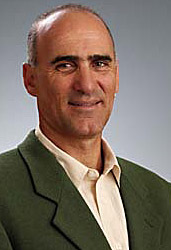I've found it fascinating to read over some of the accounts of his careers in politics, especially given that much of it preceded not only my interest in politics but even my birth. I particularly enjoyed this outstanding collection of photographs published on the SMH website.
No matter what your opinion of his politics, the man has achieved amazing things. It will be fascinating to see the Greens attempt to move out from under his not inconsiderable shadow.
That will be a particularly difficult job as the ALP's prognosis worsens. It remains unclear how many of the "old ALP faithful" (especially the blue collar workers) will favour the Greens, as opposed to becoming what we used to call John Howard's Battlers.
In those circumstances, I thought it would be interesting to "take stock" of what the Greens have achieved in NSW, and consider what effect (if any) the events of the last week might have.
Lower House
In the 2011 election, the Greens managed their first ever lower house member (MLA): Jamie Parker in the seat of Balmain.
 |
| The man himself. Photo from here |
The seat of Balmain has been created and abolished (and held a number of different names) over time in NSW (as the wikipedia article helpfully sets out), and was most recently revived for the 2007 election.
Verity Firth (ALP) won that year with a 54/46 preference count over the Green candidate - the Liberal candidate was competitive but was well behind on the first count and never looked like catching up on distribution of preferences.
In the 2011 election, it appears that the Greens were going to be competitive in two seats: Balmain where they were running Parker, and Marrickville where they were running Fiona Byrne, mayor of Marrickville. Both were inner city seats, and therefore presented a demographic most likely to elect a Greens candidate.
 |
| Fiona Byrne. Photo from SMH |
Somewhat incredibly, the Greens finished 2nd in 14 other seats. How much that had to do with the anti-ALP vote remains to be seen.
Upper House
The Greens are always likely, at least for the foreseeable future, to find opportunities in the Upper House, given the Westminster system that we operate under.
Their representation has steadily tracked upwards since their first member (Ian Cohen) was elected in the 1995 election, where he served two 8 year terms.
 |
| Photo from the Greens website |
1991: 3.3%, none elected
1995: 3.7%, 1 elected
1999: 2.9%, 1 elected
2003: 8.6%, 2 elected
2007: 9.1%, 2 elected
2001: 10.3%, 3 elected
Prognosis
Since the election the polling numbers for the Greens appear to have increased:
However, that needs to be considered in light of their polling numbers before the election:
It may be that the polling numbers for Greens will be stubbornly higher outside of campaign than within it - you will note that the numbers nosedived from 17% to 11% as soon as the campaign starting. This may have a lot to do with the significantly greater advertising dollars that the major parties have to spend during a campaign.
What also remains to be seen is the effect of the minority government in Canberra, as well as the Carbon Tax. Recent trends appear to suggest that voters are pretty good at telling the difference between state and federal issues, but that remains to be tested when it comes to minor parties.
Having said that, the Greens are not pitching for the centre (yet). It may well be the case that the additional exposure that the federal politicians have received will increase the Green vote as many people find out that the "loony left" isn't quite as loony as they thought.
It may well be that the Greens are going to change our 2-party system into a 3-party system. On the other hand, we all know what happened to the Democrats.
Time will tell.


No comments:
Post a Comment